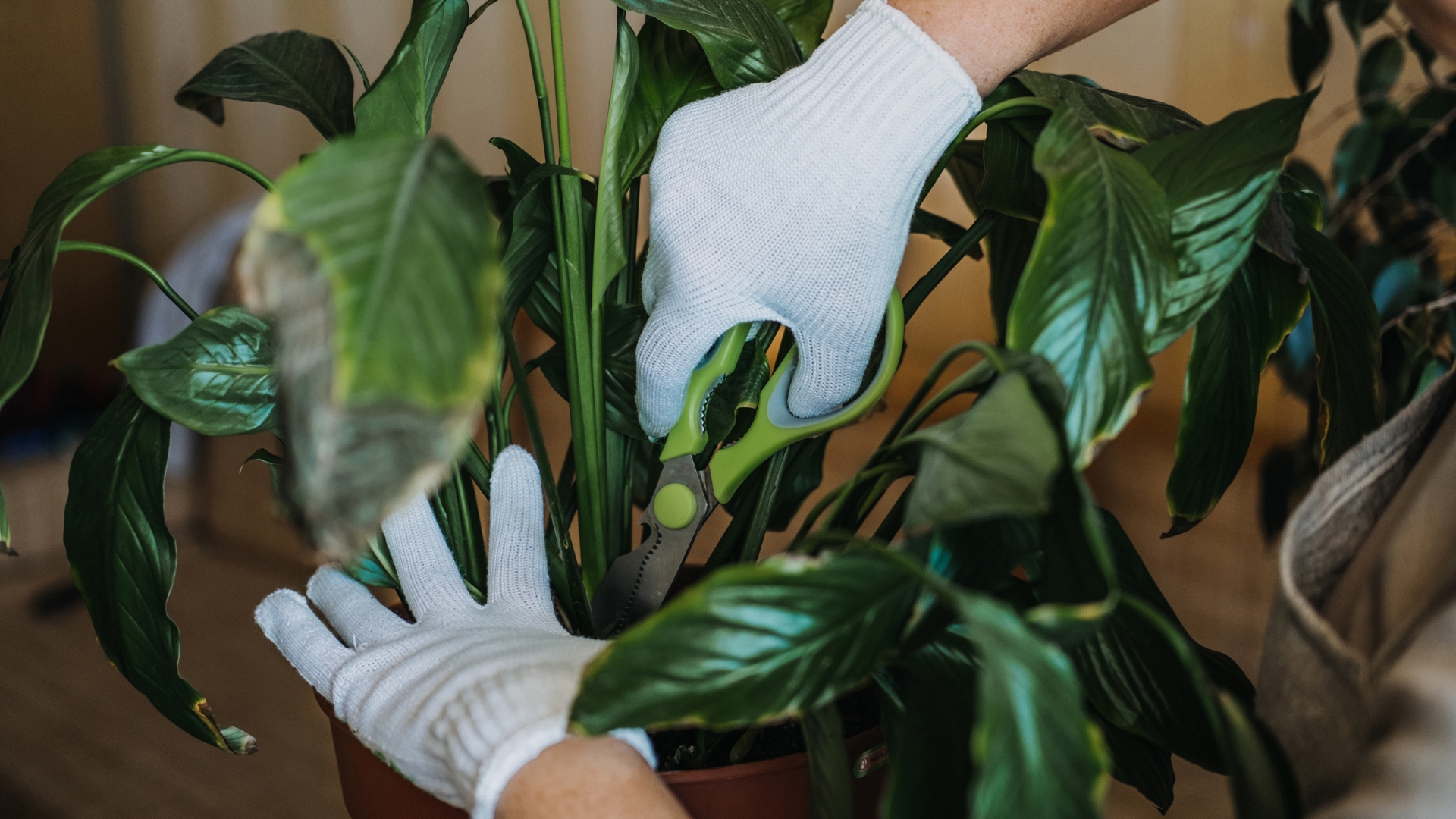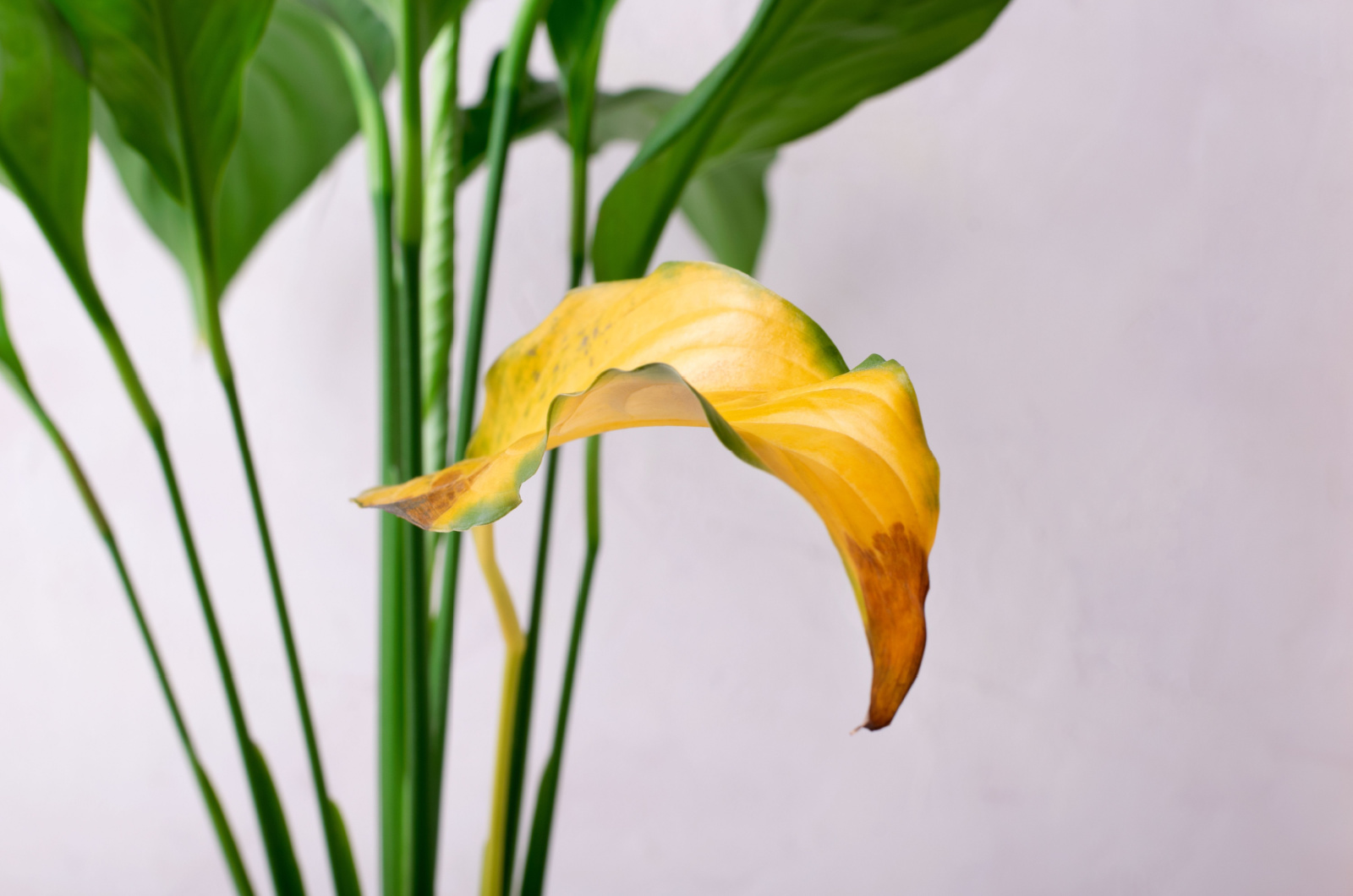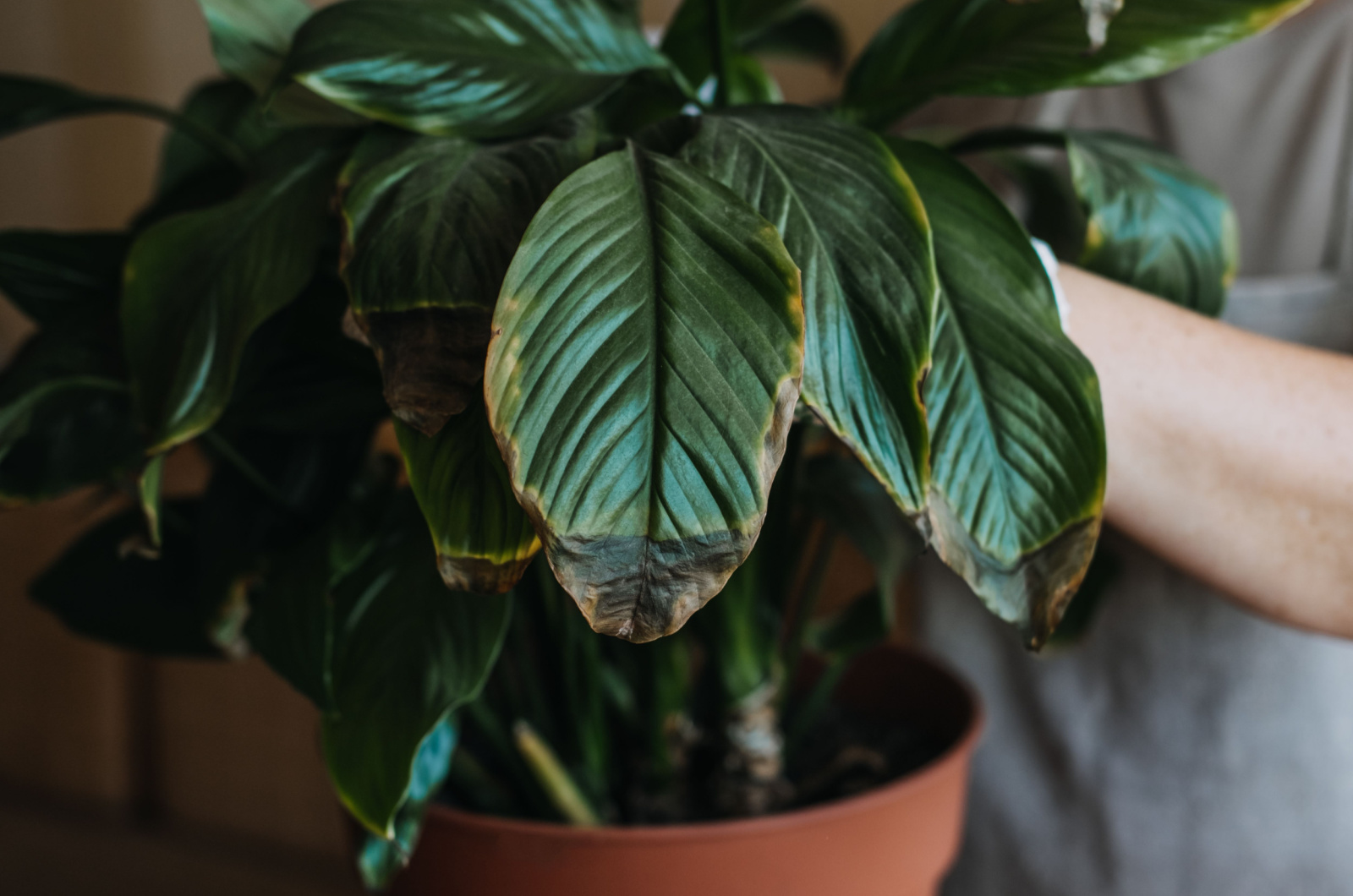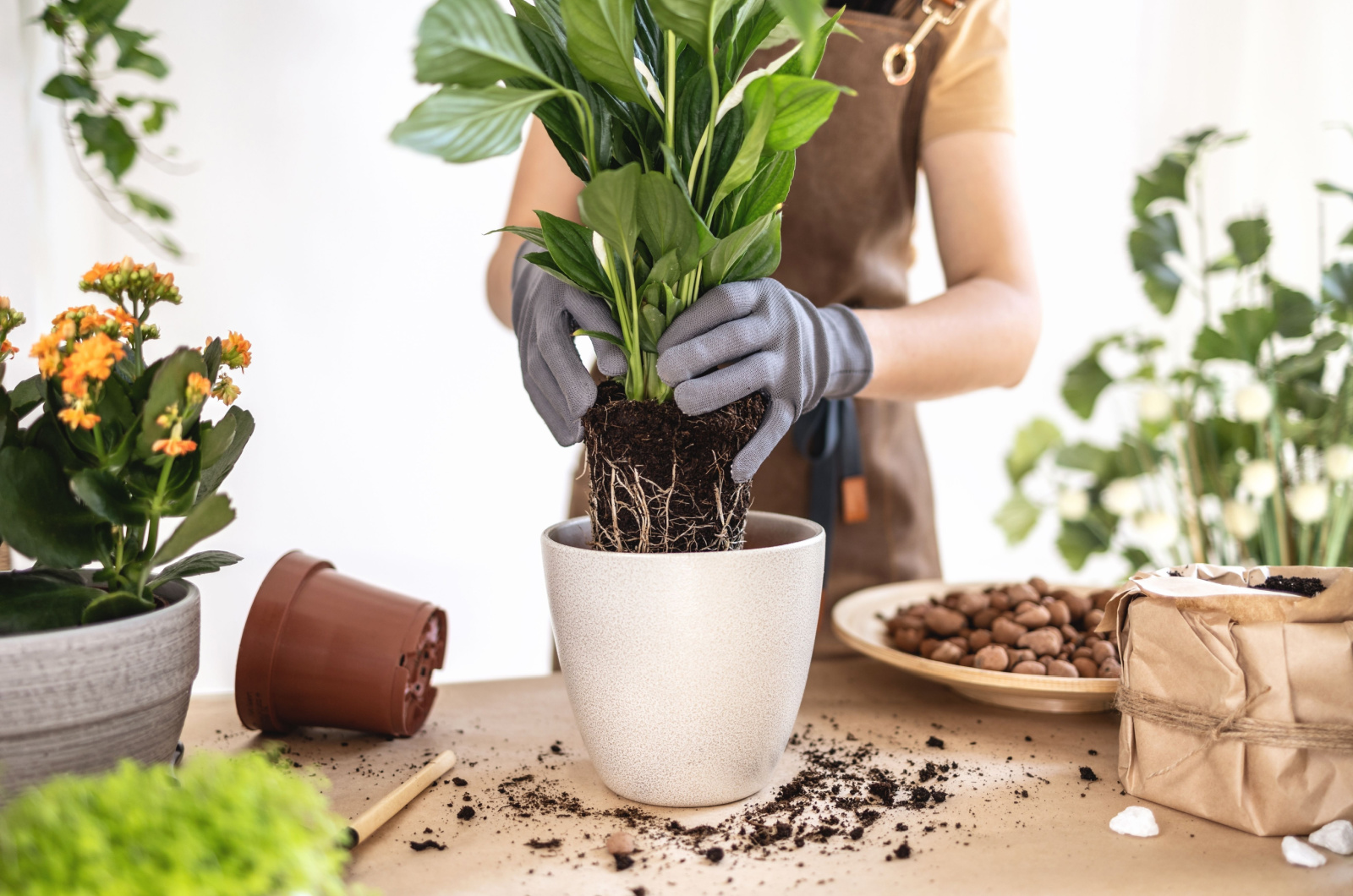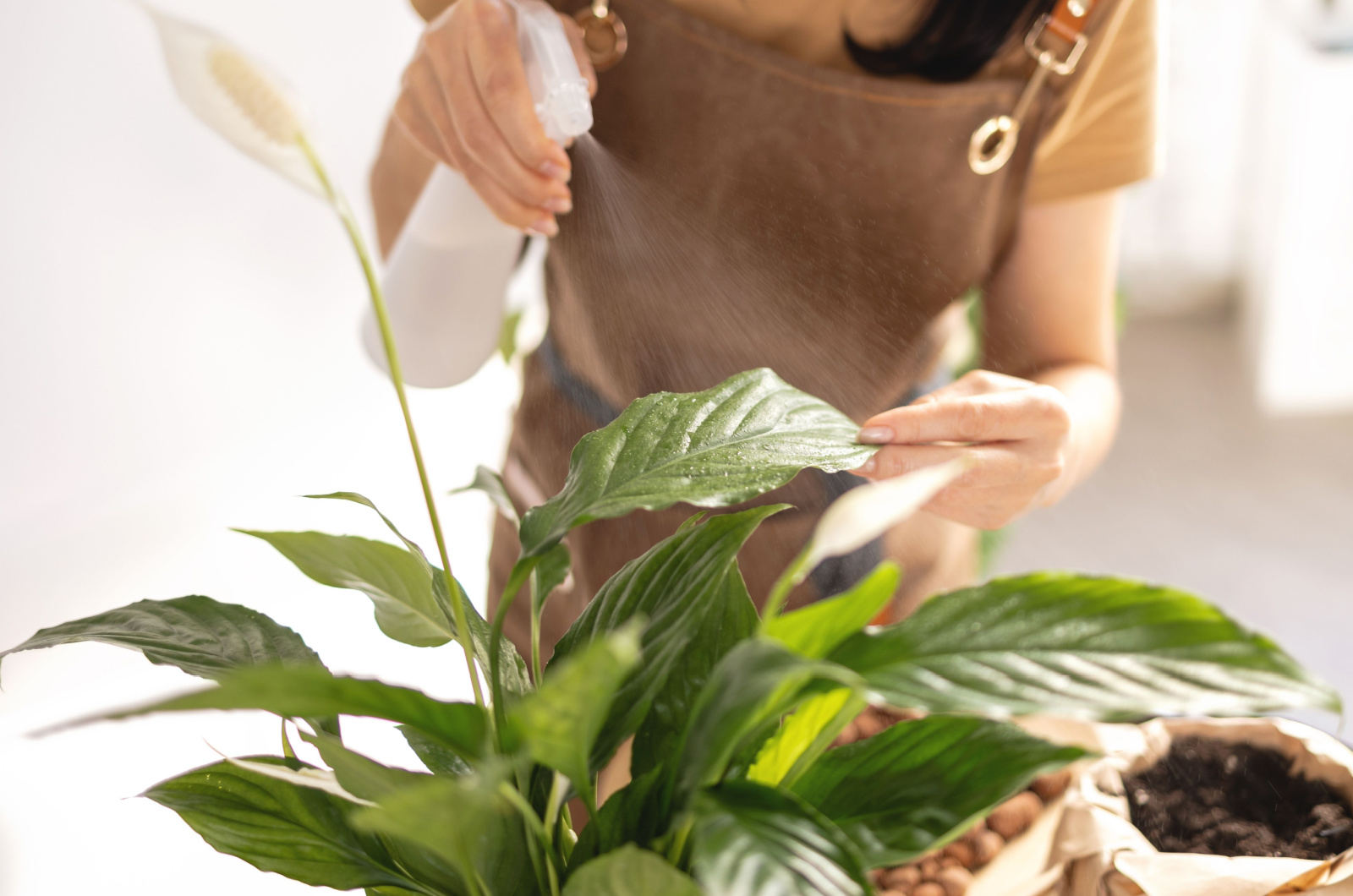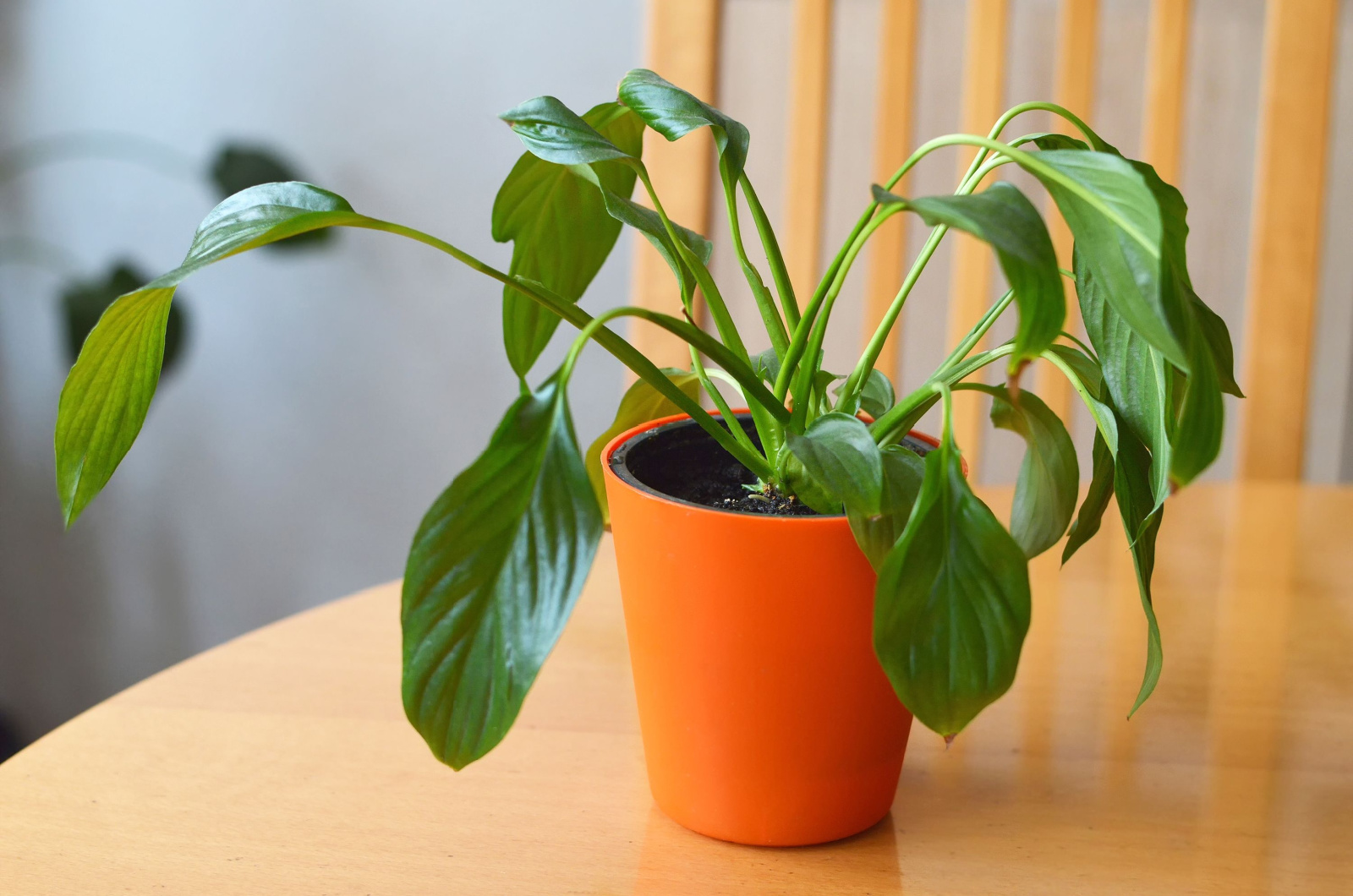I would recommend the peace lily plant to any grower no matter their gardening experience. These plants have a good reputation regarding maintenance and their beauty is incomparable.
However, the peace lily is still a plant and it depends on us and the conditions we provide it with. Some issues can occur but, luckily, they can easily be solved if treated on time.
In this article, I’ll show you some of the most common peace lily problems, how to deal with them, and how to prevent them from happening ever again!
Let’s get started!
1. Yellow Leaves
Almost every grower has dealt with yellowing of the leaves of their precious plants. Sometimes, plant foliage can turn yellow as the plant matures and that’s completely normal.
For peace lilies, things are a little bit different. The most common cause of yellow leaves in Spathiphyllum plants is overwatering.
Waterlogging a plant’s growing substrate can have fatal consequences on a plant’s health. The roots will suffocate in standing water and stop sending nutrients to the leaves. As a result, peace lily leaves will display yellowing.
If the soil of your Spathiphyllum is dark, mushy, and has a foul odor, you most likely overwatered it, and the fungus that causes root rot settled in.
Another reason why this tropical plant displays yellowing is temperature fluctuations. Putting your peace lily near doors and windows that open and close too frequently can lead to discoloration.
This plant is native to tropical climates and can’t tolerate cold drafts or cool temperatures; anything lower than 40 degrees Fahrenheit can cause yellowing.
How To Fix
If you’re dealing with an overwatered peace lily, you’ll need to take the plant out of its pot to determine the severity of the issue.
When you remove your peace lily from the container, check if the roots are white and plump. If so, put the plant back in the container, and allow it to dry well.
However, if the roots are mushy, black/brown, and have a foul odor, your peace lily is most likely suffering from root rot disease. You should remove all the diseased roots using a sterilized pair of scissors and plant your peace lily in new soil.
Make sure to irrigate your Spath only when the top 2 inches of the growing substrate dry out.
If your plant isn’t overwatered but has yellow leaves, you should adjust temperatures around it. The temperature range of 65-80 degrees Fahrenheit is ideal for Spathiphyllum species.
Additionally, make sure the plant isn’t located near heat-emitting devices or vents.
2. Leaves Turning Brown
Browning in peace lily foliage is another problem you may encounter. There are a few causes of such discoloration in Spathiphyllum plants. If browning isn’t severe, too much direct sun is most likely the cause.
These plants don’t need a lot of light and harsh sun rays can quickly damage it. If your peace lily is located too close to a sunny window, you have the culprit.
Overfeeding can also cause browning in peace lily foliage as well as too much or too little water. However, in these cases, some other signs may appear on the plant.
Fluoride and chlorine found in tap water can cause the leaves of your Spath to turn brown. If all other conditions are suitable, the problem may be in the type of water you use.
How To Fix
These species originally grew in the tropical regions of Asia and the Americas. In their natural environment they grow under taller plants and direct sun can’t reach them.
You need to find a new location for your peace lily where it will be exposed to bright but indirect light.
If overfeeding caused the browning in your Spath, make sure to flush its growing substrate with clean water. Feed your peace lily monthly during the growing season using a balanced fertilizer diluted to half strength.
Since this plant is sensitive to tap water, start using distilled water or harvested rainwater.
3. Wilting
Beginners are frequently dealing with wilting peace lilies. The two most common reasons why this occurs are overwatering and underwatering.
Underwatering isn’t too dangerous and your peace lily can quickly recover from this condition. Well, things are way different when it comes to overwatering and it can have fatal consequences for your plant.
The trickiest part is to determine if your Spath is overwatered or dehydrated. First, take a look at the growing substrate; if it’s light, dry, and crumbles when touched, underwatering is to blame.
On the other hand, dark, mushy, and soggy soil is a telltale sign of overirrigation in Spath plants. Yellowing can also occur and it primarily affects the lower leaves.
How To Fix
In the case of overwatering, I’ve already told you that you’ll need to repot your peace lily. Remember that unhealthy roots can’t send water or nutrients to the other parts of the plant, so your peace lily could die if you don’t remove them.
If your Spath displays wilting as a result of dehydration, all you need to do is give the plant a good soak.
You can also water your peace lily using the bottom watering method, i.e., put the pot in a sink filled with water and leave it so that the soil can absorb water gradually.
If there are some brown or dry leaf tips, don’t remove them immediately but rather wait for a few weeks to avoid stressing your peace lily even more.
4. Pest Infestation
One of the reasons I love peace lilies is because annoying pests typically avoid these plants. But if the plant is weak and has other issues, pests are more likely to attack it.
Spider mites, aphids, and mealybugs can be found on the surface and the undersides of the Spath’s foliage. This is pretty common if you put already infested plants near your peace lily.
It’s essential to inspect the plant carefully and start treating it if you notice any pests.
How To Fix
I always advise new growers to wipe and inspect the leaves of their Spath regularly. If the infestation isn’t severe, spraying the plant with water will most likely fix the issue.
Neem oil, insecticidal oil, and other pest control techniques are used if the number of pests is larger and they are damaging the plant.
If the pests were on a new plant you bought, I recommend isolating it until you fix the issue. This technique is frequently used by growers that have more plants in their collections.
5. Non-blooming Peace Lily
These plants are renowned for their captivating white flowers and if the plant doesn’t have any, lack of light is most frequently the culprit.
You may have heard numerous times that the peace lily tolerates low light. It really does and will be healthy, but it can’t produce more blooms in these conditions.
Light gives energy to your Spath and encourages it to flower.
Rarely, underfeeding may result in the absence of blooms in Spathiphyllum plants. If you haven’t fertilized or repotted your Spath for a while, this can affect the blooming stage.
How To Fix
To encourage your peace lily to bloom, you’ll need to expose it to more light. Bright indirect light will trigger blooming, but make sure harsh sun rays don’t touch the leaves of your Spath.
If you forgot to feed your Spath, apply a dose of fertilizer and your plant will be back on track pretty soon.
With regular care and inspection, you’ll avoid these problems in your peace lily. And if some occur, just follow our guidelines to fix it and restore the beauty of your prized Spath.

